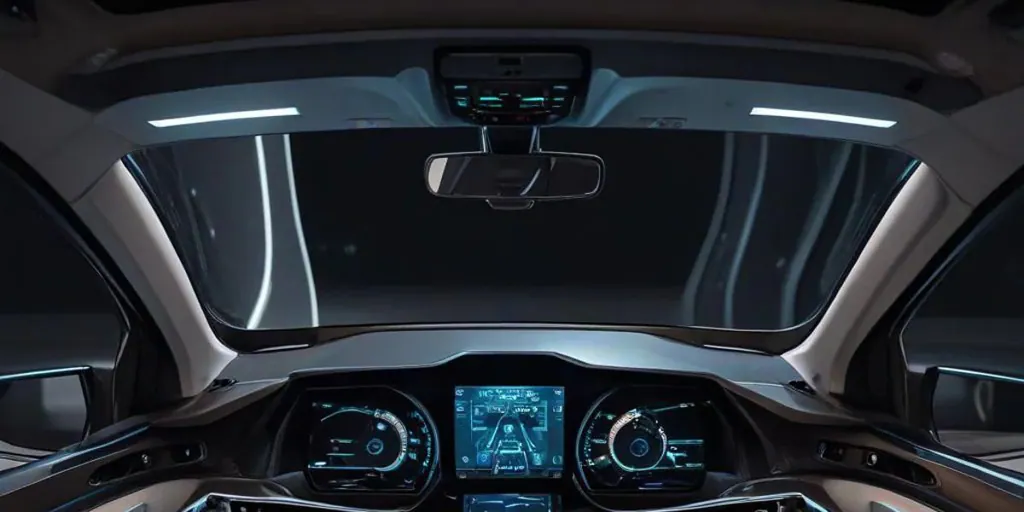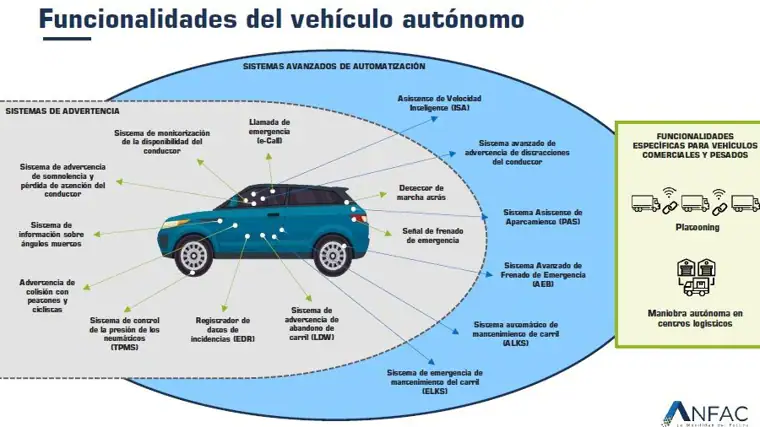More than 80% of passenger cars can now have Level 2 autonomous driving.

The lack of a regulatory framework to allow more automated vehicles to be sold is driving the promotion of these systems on roads and in Spanish cities. This is the main conclusion of the third edition of the Autonomous and Connected Vehicles Barometer published by the Spanish Association of Automobile and Truck Manufacturers (ANFAC).
The report also highlights that currently 81% of passenger car models are already capable of SAE 2 degree of autonomy technology. In the case of passenger cars, 81% of models available on the market are already capable of implementing this level. automation.
The regulatory framework for autonomous driving being developed by the DGT is in the final stages of approval and could come into force in early 2025. In this sense, ANFAC calls for its speedy implementation in order to bring the legislation into line with current technological developments. vehicle capabilities and enable the deployment of highly automated driving systems that are already under development.
According to José López-Tafall, Director General of ANFAC, “Technology is developing faster than legislation itself. The autonomous and connected car is a very valuable opportunity for Spain and we are just one step away from realizing its full potential.
Felipe Jiménez Alonso, Deputy Director of Research and Director of Intelligent Systems at INSIA, also took part in the presentation of the third edition of the Report, for which “the implementation of increasingly sophisticated assistance systems cannot be stopped, and their coordinated integration allows the vehicle to have a more complete and reliable perception of , what is happening around him and within him, with which he can gradually but continuously perform tasks of increasing complexity, which promotes user acceptance.
Progress in the implementation of autonomous driving systems occurred thanks to the entry into force of the mandatory General Safety Regulations (GSR2) on July 7 last year. This means that all new registrations feature ADAS driving assistance systems such as Advanced Emergency Braking (AEB), Emergency Lane Keeping Assist (ELKS) and Intelligent Speed Assist (ISA), among others. According to ANFAC, this is how a noticeable leap and progress has been made with the systems included as standard in the current offering, with the clear goal of improving occupant and pedestrian safety.
Regarding the level of potential market autonomy, the results show that the passenger car and bus sectors are leading the way: the level of potential autonomy is 3.1 out of 5 and 66.6% and 72.9% respectively of vehicles could achieve a partial level of automation (SAE 2 or 3) if conditions were optimal. In light commercial vehicles, the results are slightly more subdued: a score of 2.8 out of 5 and 65.6% of vehicles can achieve SAE 2 or SAE 3 certification. Notably, for both passenger cars and commercial vehicles, more than 30% of the commercial supply can achieve very high potential level of automation (SAE 4 or 5), since there are already brands capable of this.

Functions
In commercial vehicles, automation is at a less mature level in terms of potential SAE level compared to passenger cars and buses. Potential SAE level is 2.5 out of 5 for commercial vehicles. It should be noted that relative to the previous barometer, industrial companies are improving their automation potential, with SAE 2 and 3 dominating with 35.8%, compared to SAE 0 and 1 with 30.5%, tipping the balance in favor of automation.
Level of real autonomy
The actual level of autonomy of passenger cars for the most part is SAE 2 (81% of models), while the maximum available level is SAE 3, with 18% of models able to achieve it. Both levels of automation improved compared to the previous year. Among the top 10 features are the Tire Pressure Monitoring System (TPMS) (built into all models, as it has been mandatory since November 2014), Advanced Emergency Braking (AEB) (98.5% of cars). and Lane Departure Warning (LDW) (98.2%). Other functionality is being deeply integrated and is present in more than 75% of models.
Most light commercial vehicles are available with SAE 2 autonomy level (57% of models), and the highest level available on offer is SAE 3, although this is only available on 2% of models. The most implemented features are Advanced Emergency Braking (AEB) (98.1%), Tire Pressure Monitoring System (TPMS) (90.7%) and Lane Departure Warning (88.9%) (LDW) . The availability of functionality is somewhat less than in the case of passenger cars.
In commercial vehicles, the majority of models on the market (71%) can be purchased with SAE 2 autonomy level, and the maximum level offered is SAE 3, although only available in 2% of models. All of them already include Lane Departure Warning (LDW) and Advanced Emergency Braking (AEB). The next most common are Pedestrian and Cyclist Pre-Collision System (100% of models) and Tire Pressure Monitoring System (TPMS) (100%).
The most offered buses in Spain are available at SAE level 1 and 2 (68% and 39% respectively), and are the only vehicle type that offers SAE 4 as the maximum level, available in 3% of models. The most implemented features in buses are Tire Pressure Monitoring System (TPMS), followed by Reverse Sensor (98.3%) and Blind Spot Warning System (98.3%).
